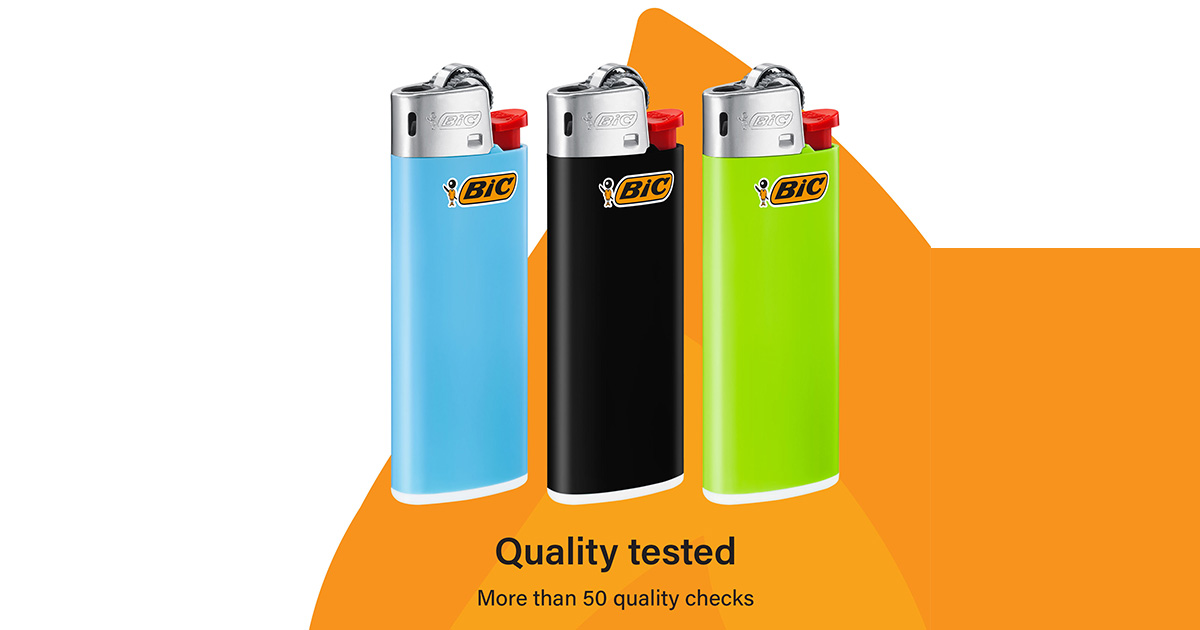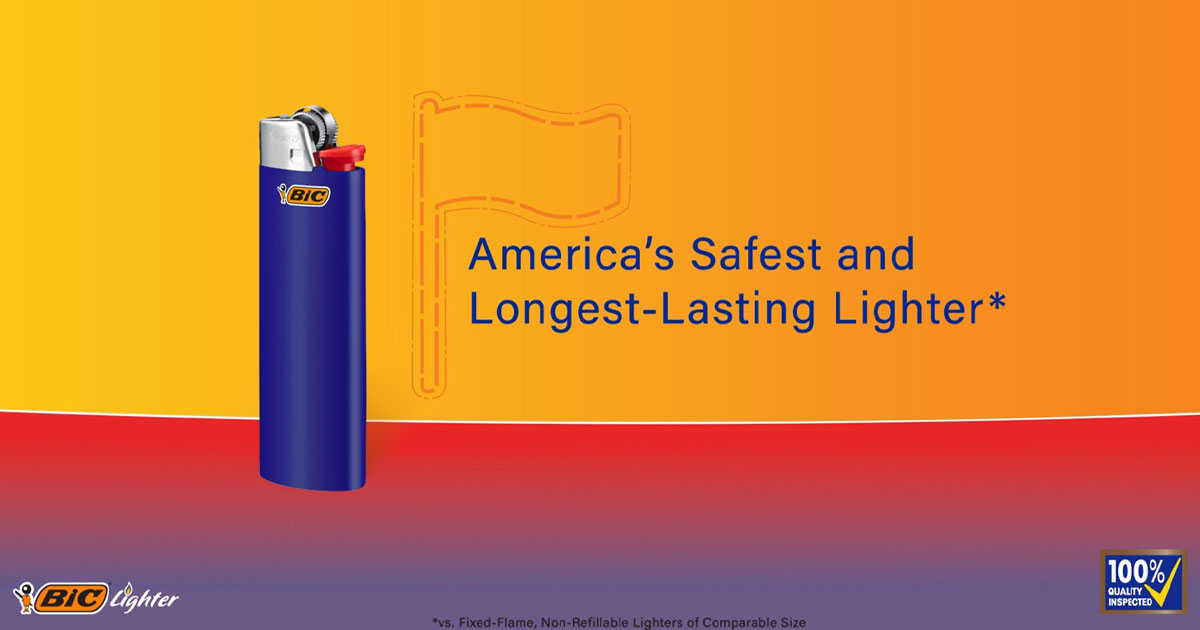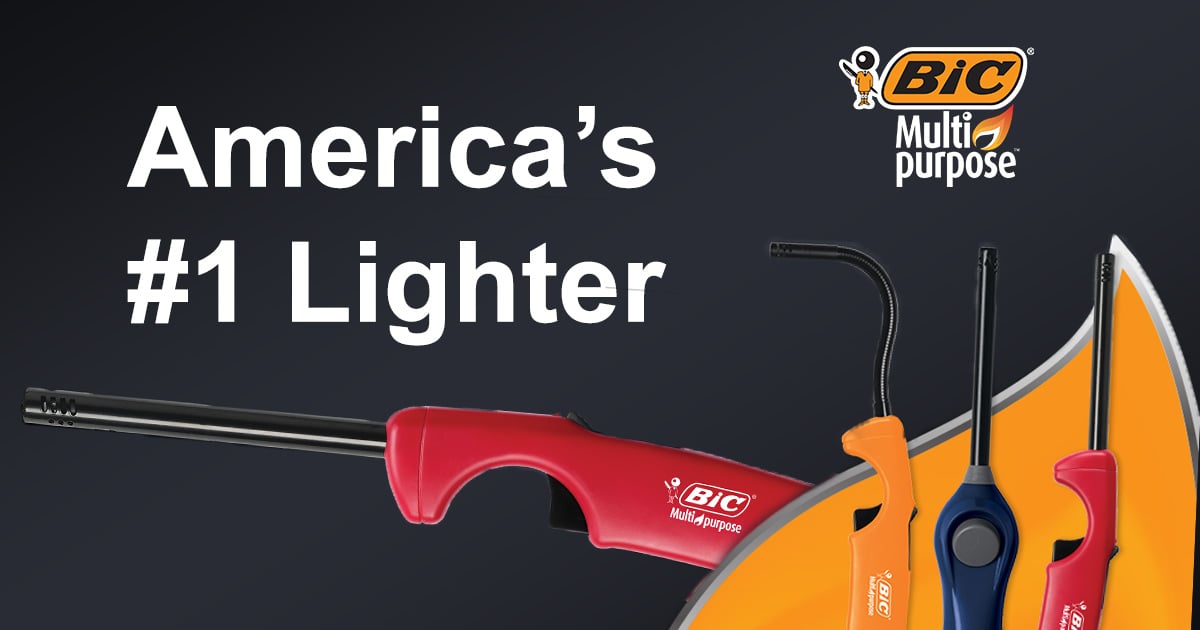BIC is Serious About Safety

BIC has developed and perfected the strictest quality and safety standards as safety is our #1 priority. The following are some lighter safety standards recommended by ASTM International, these tests are most closely related to accidental fires and injuries.
Many low-quality (and often less expensive lighters) failed at least one of these tests, compare to BIC which meets or exceeds all voluntary standards.
Flame Extinguishing Time
After a user removes their finger from the lighter there should not be any exposed flame within 2 seconds, and any flame that might continue below the hood or windscreen should fully extinguish within another 2 seconds. All BIC Lighters extinguish immediately.
Flame Height
Flame height should not exceed 2-inches for non-adjustable lighters or 4.75-inches for adjustable lighters (adjustable lighters are lighters that enable the user to change or adjust the flame height). BIC Lighters have a consistent flame that are well within safety standards.
Spitting & Sputtering
The condition where non-evaporated or liquid fuel escapes from the lighter producing a shower of burning liquid droplets that separate from the main flame. BIC’s fixed flame lighter design does not create spitting or sputtering.
Flaring
There should be no greater than 2-inches of variation in flame height from the steady state flame condition. In other words, the flame should not flare up unexpectedly to a greater height. BIC’s fixed flame lighter design does not create flaring.
Drop Test
Every lighter should be able to withstand three separate 5-foot drops without fuel reservoir fragmentation, sustained self-ignition or gas escape (leakage) exceeding 15 milligrams per minute. BIC lighters are routinely drop tested drop tested and pass the requirement.
Volumetric Displacement
Liqui portion of fuel should not exceed 85% of the fuel reservoir capacity to allow for some expansion within the body of the lighter in hotter weather conditions (as one example). BIC’s automated manufacturing process ensures the fuel doesn’t exceed 85% of the fuel reservoir capacity.
Resistance to Continuous Burn
If a lighter is lit for two minutes or more, the highest flame height should be two inches if held vertically, without any issues of components continuing to burn, or the valve rapturing/coming apart. All BIC Lighters meet these requirements.
Resistance to High Temperatures
Every lighter should be able to withstand 149-degrees Fahrenheit for 4 hours without gas escape (leakage) exceeding 15 milligrams per minute. BIC Lighters are routinely tested and meet the elevated temperature requirements.
It is imperative that everyone does their part to understand and practice lighter safety – from lighter manufacturers to retailers to educators to consumers.
As the U.S. leader in lighter manufacturing, BIC is committed to meeting or exceeding the most rigorous safety and quality standards. Each of its 7 million lighters produced worldwide daily undergoes more than 50 quality and safety check during the manufacturing process.
To review BIC’s full lighter safety report, click here.


